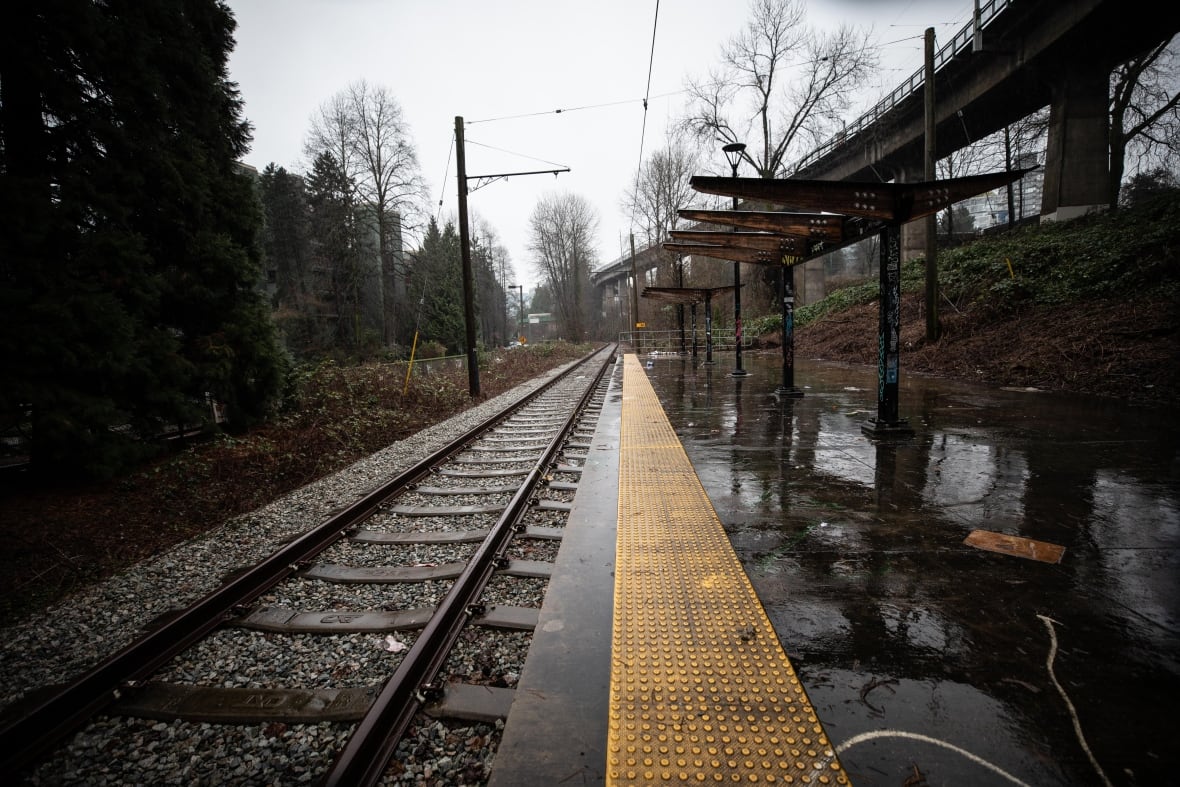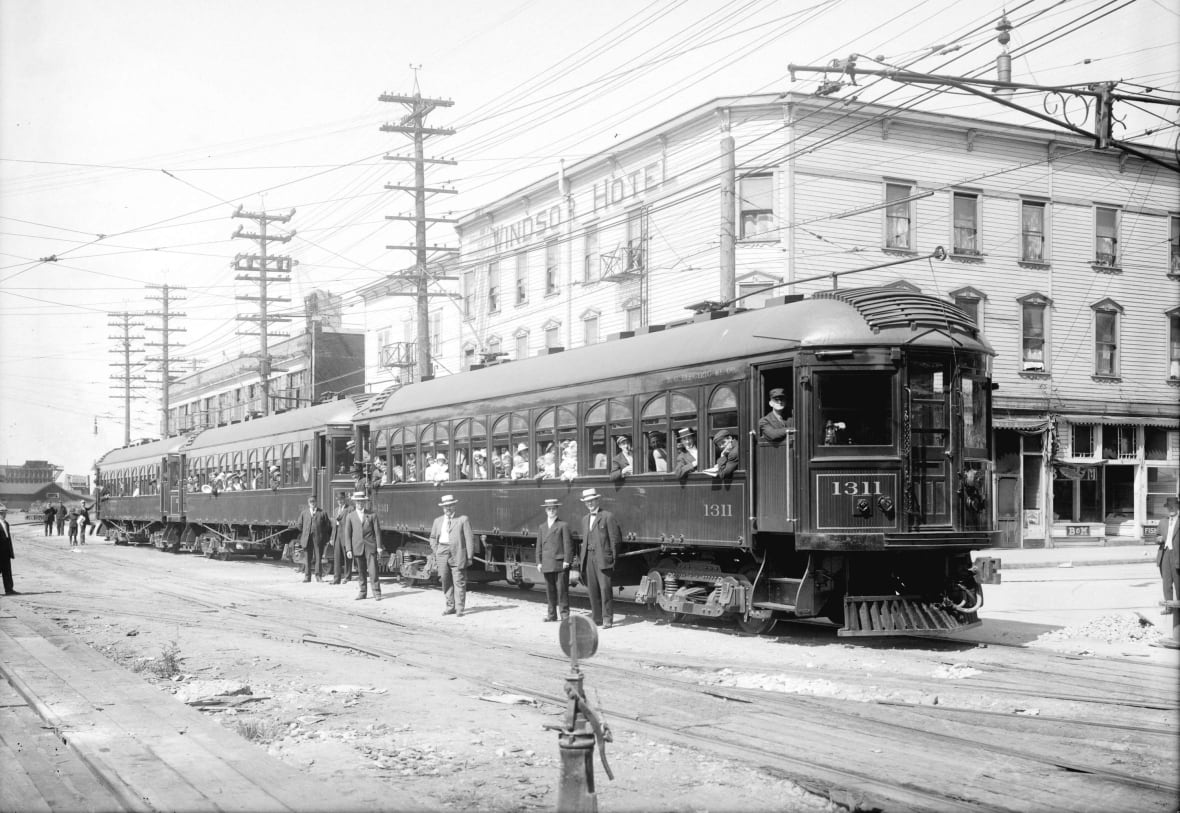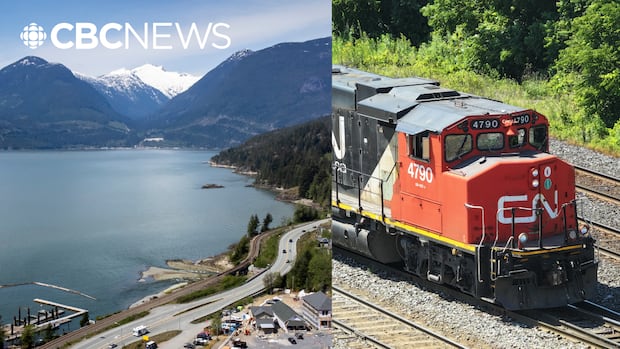Push for regional train system in B.C.'s Lower Mainland gaining traction
Potential train system in southwest B.C. estimated to cost $10B, advocacy group says

Support for a regional train system in B.C.'s Lower Mainland is increasing a month after CN Rail announced it would be pulling out of its operations in the Sea-to-Sky region.
CN Rail's decision to move out of the corridor between Squamish and Exeter, B.C., just northwest of 100 Mile House, led local MP Patrick Weiler to call for a return of passenger rail service, and the region's MLA Jeremy Valeriote is joining those calls.
In addition, Mountain Valley Express (MVX), a local advocacy organization, said it's time for Metro Vancouver and the rest of the Lower Mainland to be connected via regional trains, bringing back a commuter service that was delivered through interurban trams in the 1950s.
"We estimate that between Abbotsford and downtown Vancouver, that regional rail will take only about 45 minutes," said Lee Haber, MVX's director of strategy and partnerships.
"And, of course, this is going to be much more reliable than driving on Highway 1," he added. "If you want people to use transit, you have got to make sure that it's competitive with driving, and if you can do that, people will use it."
MVX, which is funded by private and public donations, calculated in a 2023 report that it would cost around $10 billion to build a 350-km regional rail network that would connect the South Coast from Whistler to Chilliwack and most places in between.
Metro Vancouver is lagging behind comparable regions like Brisbane, Australia, when it comes to regional rail, Haber said, adding he's already spoken to provincial and local officials about the proposal.
"Regional rail trains go up to 160 km/h, whereas the SkyTrain is limited to only about 80 km/h," he said. "So it's really serving those longer-distance trips, which existing forms of transit aren't really designed to serve."
Haber said a regional train system would be viable, whether it is provincially-run, privately-backed or through a First Nations joint venture, and that local leaders and the public at large support the initiative.

Region used to have interurban trams
In the early 1900s, the Lower Mainland used to be connected by five interurban tram lines — a fully electric service, run by the B.C. Electric Railway Company, that carted passengers to and from downtown Vancouver all the way to Chilliwack.
"It was this really incredible time of transportation, that didn't happen just here in the Vancouver region, it happened right across North America," said Gabrielle Sharp, the museum co-ordinator at the Steveston Tram in Richmond, B.C.
"But it seemed to last particularly long here because it really suited our our lifestyle and the geography."
Our stair cases are getting painted this week and they are looking pretty great in our opinion 😁 Visitors will still be able to access the Tram while the work is being done! Stop by for a visit we are open 12-5pm <a href="https://t.co/EWmXQL10dF">pic.twitter.com/EWmXQL10dF</a>
—@StevestonTramThe Steveston Tram preserves one of the cars used in the heyday of interurban transit in the Lower Mainland, complete with era-appropriate decor and lighting.
But Sharp said the system was dismantled after the Second World War in the 1950s due to a number of factors, including expensive tram maintenance and newly-affluent people moving to the suburbs and buying cars.
"Oil companies and motor car companies came together, and they pressured governments to say, basically: 'Rails were the way ... of the past and roads and buses and cars, they were the way of the future,'" she said. "So governments were convinced to to do away with rails."

Haber said that it was important to preserve some of the disused train lines and corridors in B.C., and undo the mistakes made in the post-Second World War era when it came to transportation and land development.
"I think we have a long ways to go until we're competing with the most livable cities in the world, such as Copenhagen, Amsterdam ... and I think part of that is going to involve realizing some of these corridors, that we used to use and abandoned," he said.
MLA wants more public transit
Jeremy Valeriote, the MLA for West Vancouver-Sea to Sky and interim leader of the B.C. Green Party, said a new rail line specifically in the Sea-to-Sky region would be taken up very favourably by residents.
He said there was a dire need for commuter service between Squamish and Pemberton, especially to alleviate congestion along the Sea-to-Sky Highway.

But he cautioned that it would be a year before CN Rail advertises the line and offers it for lease, and it could take a minimum of three to five years for a proponent to bring forward a passenger rail proposal there.
"This train opportunity is a great thing and I'm excited about it, and many other people are, but it is really medium- to long-term," he said.
Valeriote said adding more transit to the Sea-to-Sky corridor was part of a list of priorities when the governing B.C. NDP and the B.C. Greens signed a co-operation agreement last December.
He is pushing the province for a commuter bus service in the area and said he hoped ferries and trains would eventually create more commuting options in the region.
"Rail is kind of a separate and nice to have," he said.
"It would have a huge impact on tourists and some commuters, but it's kind of a separate thing that should really come ... after getting buses on the road."
With files from Caroline Chan




